BeoVision 8900

Bang & Olufsen Designer

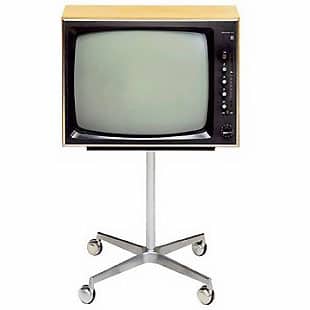
Beovision 700 won the iF Design Award in 1966
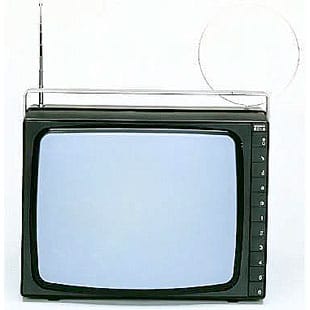
In 1970, a young designer, David Lewis, created one of the world’s first transportable TVs – Beovision 600 – long before small portable TVs became widespread. Beovision 600 was a black and white TV with a solid handle and weighed just over 13kg. Compared to the pocket-sized TVs of today, it could hardly be called portable. Nevertheless, it was transportable with a 44cm screen and excellent sound quality. The TV set won the iF Design Award in 1970.
Full transistorisation meant that sound and picture appeared at the press of a button, a new and unusual feature at the time. The cabinet was made of plastic and the handle was concealed when not in use. Six pre-set stations could be operated by one press of a button and all settings were concealed in small compartments to prevent inquisitive little fingers fiddling with them. It also featured a retractable flex.
All in all, a pioneering TV design which, in later years, was copied by many other TV manufacturers. Beovision 601 replaced its predecessor in 1973, fitted with several new features which were missed out on Beovision 600.
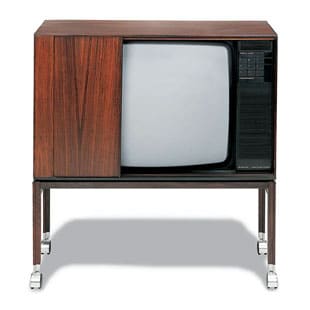
Beovision 6000 was a luxurious colour TV receiver with a 66cm screen and cordless, ultrasonic remote control (designed by David Lewis).
The slim remote control module allowed you to select up to eight TV programmes, adjust volume, brightness and colour strength from the correct viewing and listening position. You could also switch the set off without moving away from your armchair. The ‘recall’ facility provided a digital on-screen display indicating the channel currently being viewed. The reset function automatically returned volume, colour and brightness to pre-set levels.
Beovision 6000 was the first TV with dedicated remote control. Successor to the Beovision 3000 (1967) which was Bang & Olufsen’s first colour TV. The design of the TV set itself was by Henning Moldenhawer.
Picture quality was outstanding, with sharp, bright, precise image definition and natural colours. The automatic cut-off circuit monitored the balance of colours fifty times a second, guaranteeing long-term colour truth.
Sound reproduction was of hi-fi quality because Beovision 6000 was fitted with a 6,5 watts RMS amplifier which had a wide frequency range and less than 0,8% harmonic distortion. The loudspeaker was of a pressure-chamber construction as used in many hi-fi audio systems. There were separate controls for bass and treble and sockets for connecting headphones and additional speakers. The receiver could also be equipped with a module for Teletext reception and video cassette programmes could be reproduced without additional technical adjustment.
Beovision 6000’s genuine wood-finished cabinet had a unique tambour screen door for protecting the screen when the set was not in use. The self-styled wooden undercarriage with smooth-running castors was both practical and elegant.
Beovision 6000 was replaced by Beovision 6002 in 1977, again with the same stylish cabinet and sliding, tambour door.
Henning Moldenhawer (Beomaster 900 designer) once dubbed the concept of remote control Terminals as “feel commanders”. This meant that the product could be operated by the thumb on one hand – almost as if the user was feeling his way through a new type of Braille, allowing the eye to concentrate on the TV picture itself.
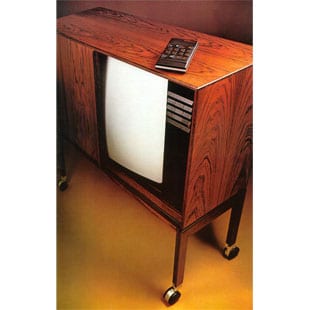
Beovision 6002 was a luxurious colour TV receiver with a 66cm (viewable) screen and cordless, ultrasonic remote control. The slim remote control module allowed you to select up to eight TV programmes, adjust volume, brightness and colour strength from the correct viewing and listening position. You could also switch the set off without moving away from your armchair. The ‘recall’ facility provided a digital on-screen display indicating the channel currently being viewed. The reset function automatically returned volume, colour and brightness to pre-set levels.
Picture quality was outstanding, with sharp, bright, precise image definition and natural colours. The automatic cut-off circuit monitored the balance of colours fifty times a second, guaranteeing long-term colour truth.
Sound reproduction was of hi-fi quality because Beovision 6002 was fitted with a 6,5 watts RMS amplifier which had a wide frequency range and less than 0,8% harmonic distortion. The loudspeaker was of a pressure-chamber construction as used in many hi-fi audio systems. There were separate controls for bass and treble and sockets for connecting headphones and additional speakers. The receiver could also be equipped with a module for Teletext reception and video cassette programmes could be reproduced without additional technical adjustment.
Beovision 6002’s genuine wood-finished cabinet had a unique tambour screen door for protecting the screen when the set was not in use. The self-styled wooden undercarriage with smooth-running castors was both practical and elegant.
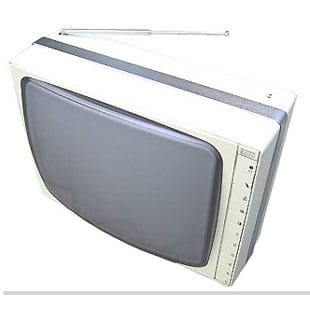
The Beovision 601 was visually very similar to the Beovision 600, but it used a mildly redesigned chassis. The changes centred mostly around the receiver section, which made greater use of integrated circuits that the previous model had done.
The Beovision 601 was the last true Bang & Olufsen portable television, in as much as it was designed and produced by them in Denmark. It would be the late 1980’s before another portable model would appear, which was the disappointing MX 1500, a Philips set made in a Philips factory in Italy.
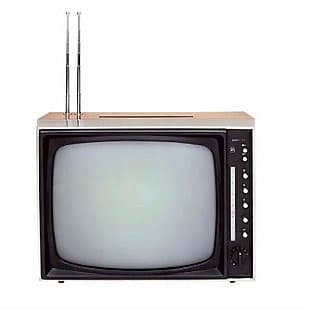
Beovision 400 was a transportable television designed in 1965 by the young David Lewis and Henning Moldenhawer while working under the direction of Jacob Jensen.
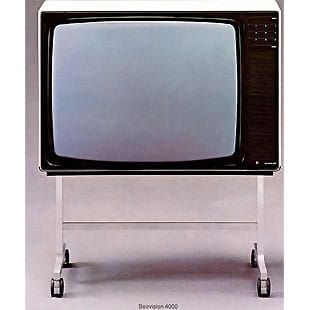
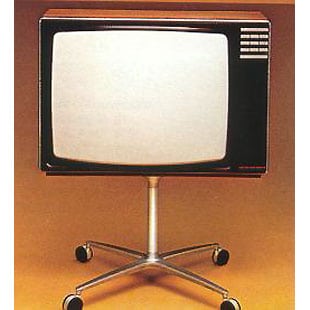
Beovision 4002 and 4402 were colour receivers with 26″ screens. Natural colours, sharp, precise image definition and high-fidelity sound reproduction are all features you can take for granted, according to the 1970 – 80 Bang & Olufsen product catalogue. Their high reliability levels were due to modular construction techniques and low heat-generation. Beovision 4002 consumed only 110 watts – less than a black and white set of years previously.
Both sets were extremely easy to use. There were facilities for presetting up to eight stations so that subsequent programme selection was just a matter of pressing one button. This turned the set on at the same time.
Beovision 4402 had the additional convenience of a cordless (ultrasonic) remote control. The set could also be supplied equipped for Teletext reception. There was automatic synchronisation of VCR programmes on all channels.
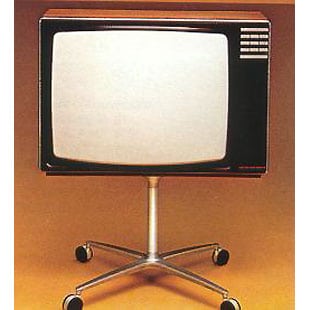
Beovision 4002 and 4402 were colour receivers with 26″ screens. Natural colours, sharp, precise image definition and high-fidelity sound reproduction are all features you can take for granted, according to the 1970 – 80 Bang & Olufsen product catalogue. Their high reliability levels were due to modular construction techniques and low heat-generation. Beovision 4002 consumed only 110 watts – less than a black and white set of years previously.
Both sets were extremely easy to use. There were facilities for presetting up to eight stations so that subsequent programme selection was just a matter of pressing one button. This turned the set on at the same time.
Beovision 4402 had the additional convenience of a cordless (ultrasonic) remote control. The set could also be supplied equipped for Teletext reception. There was automatic synchronisation of VCR programmes on all channels.